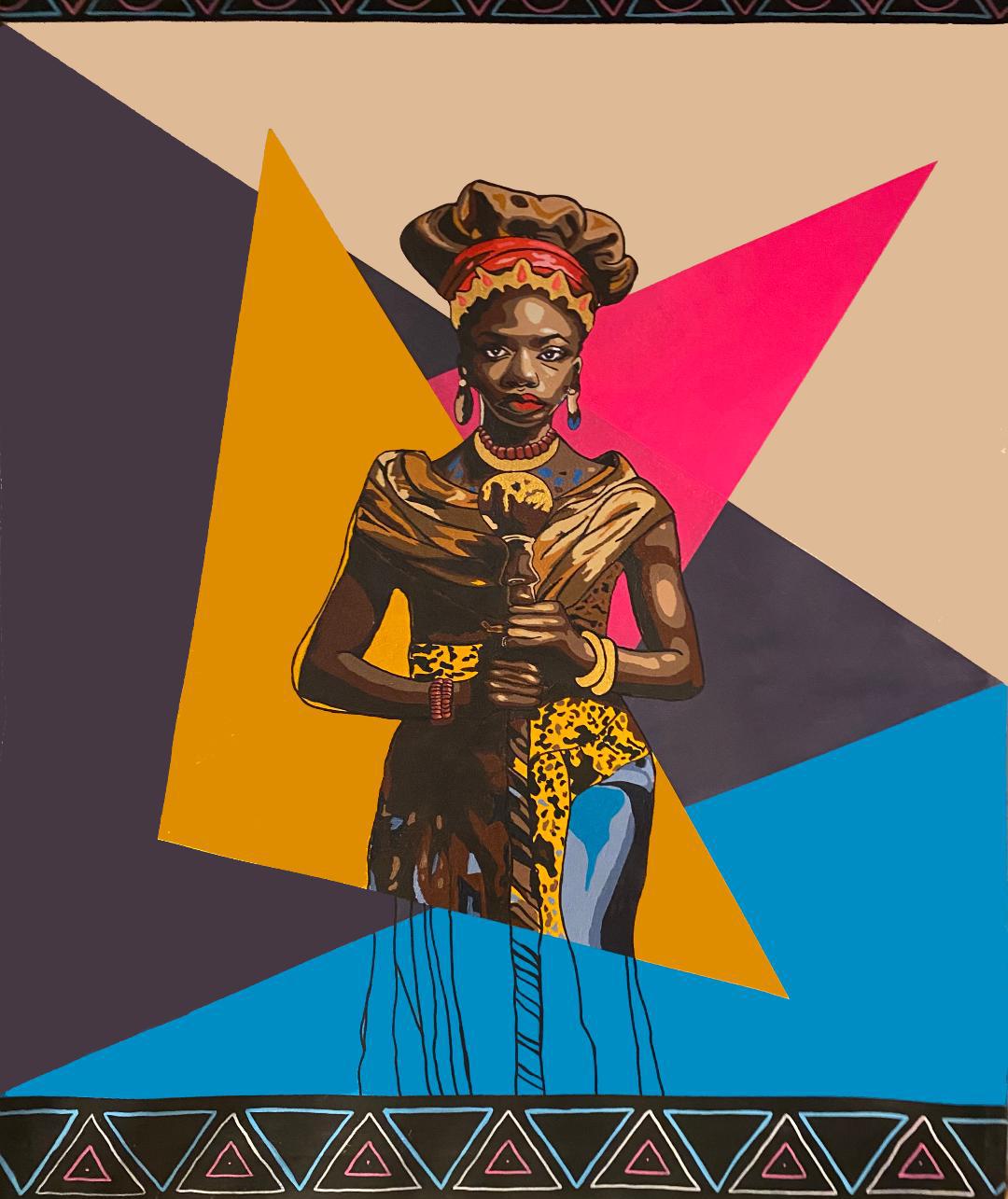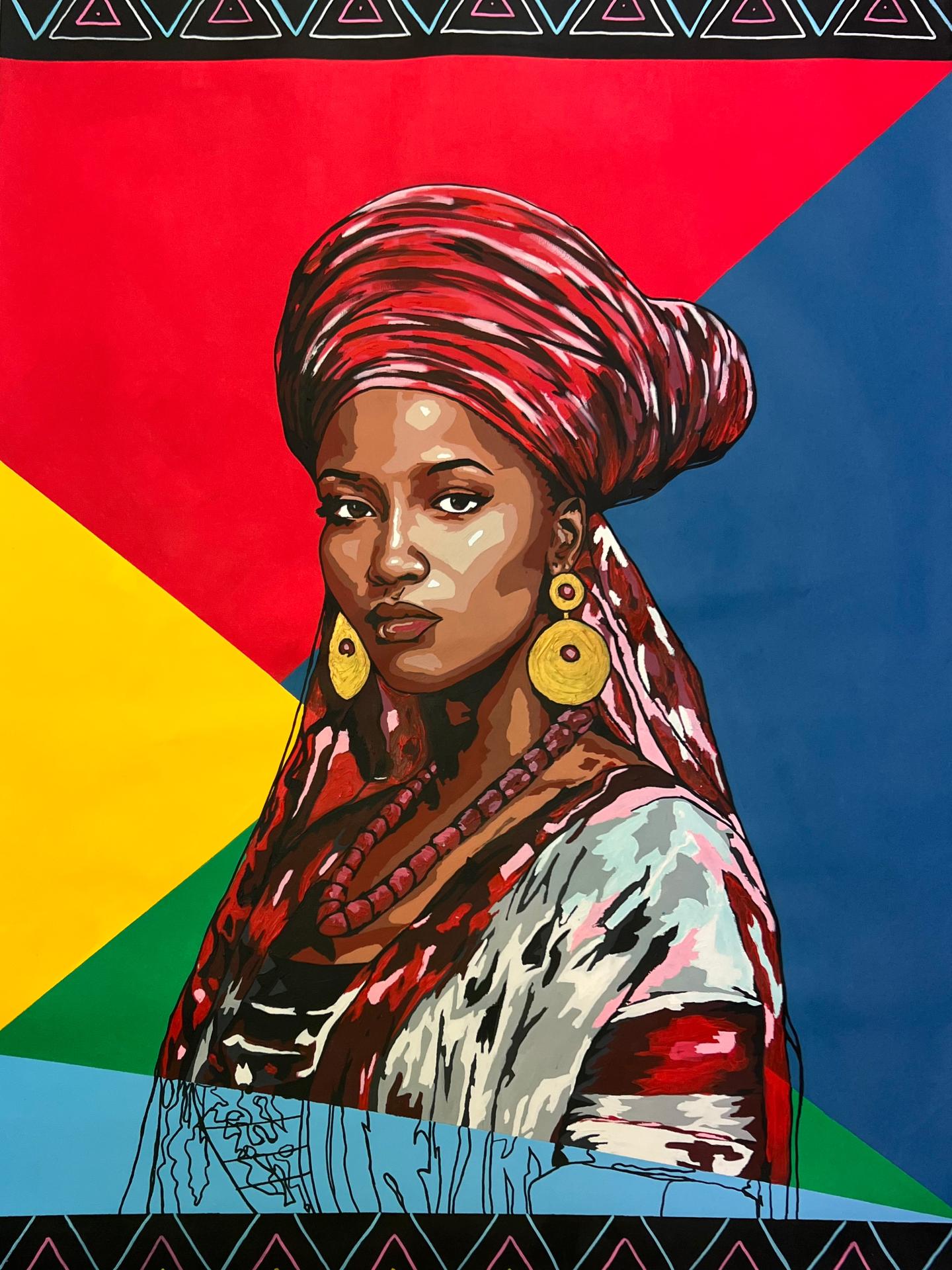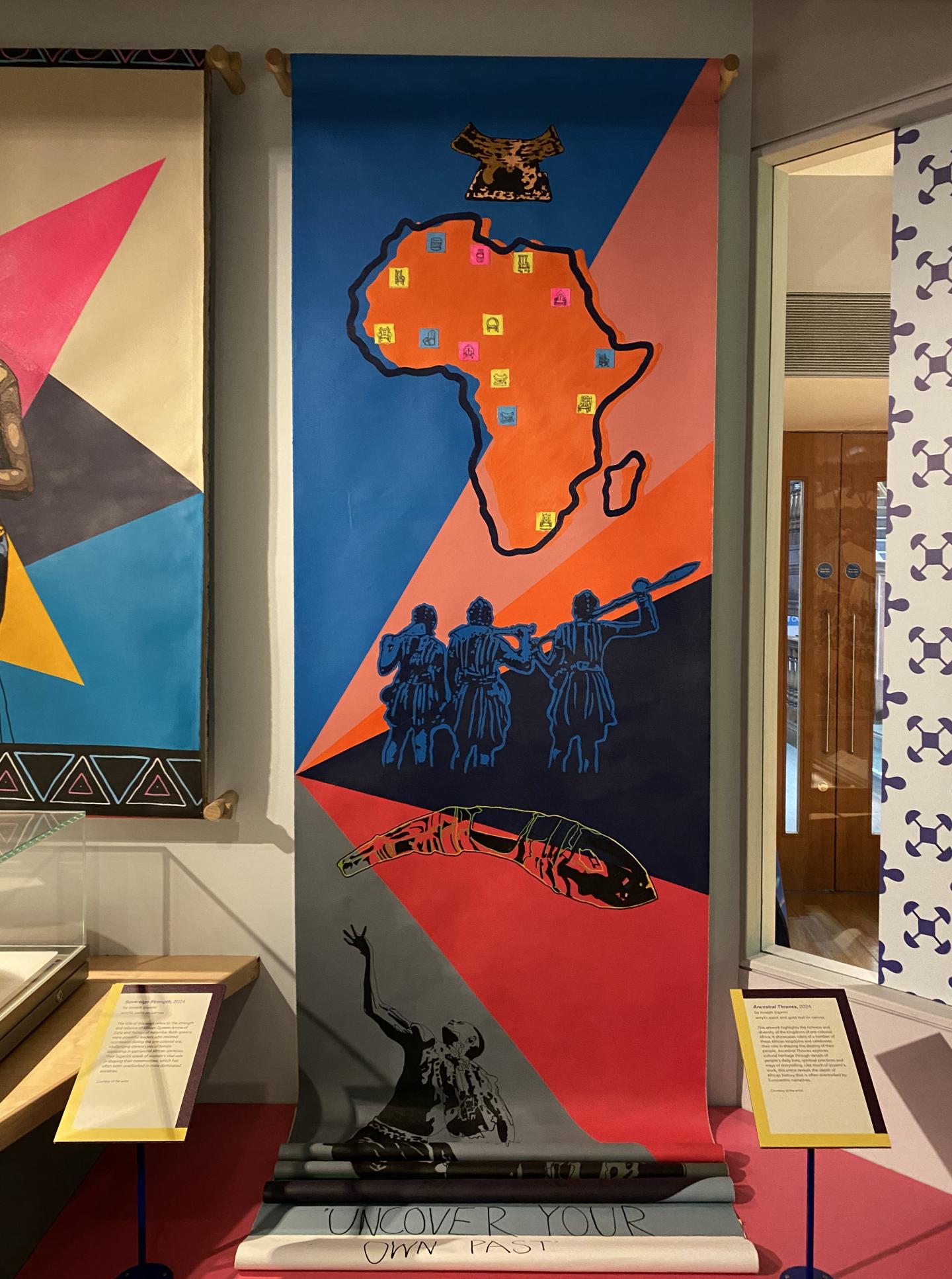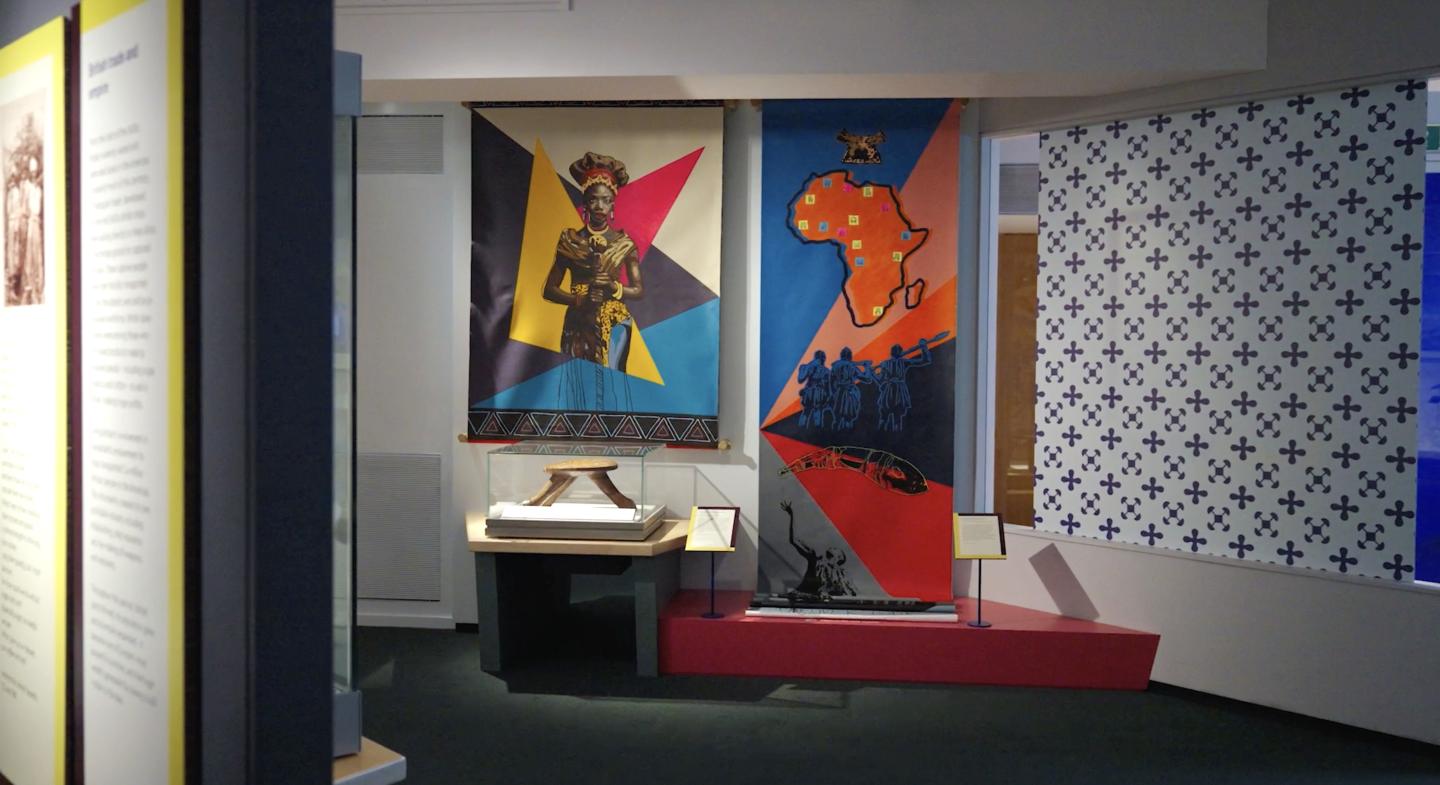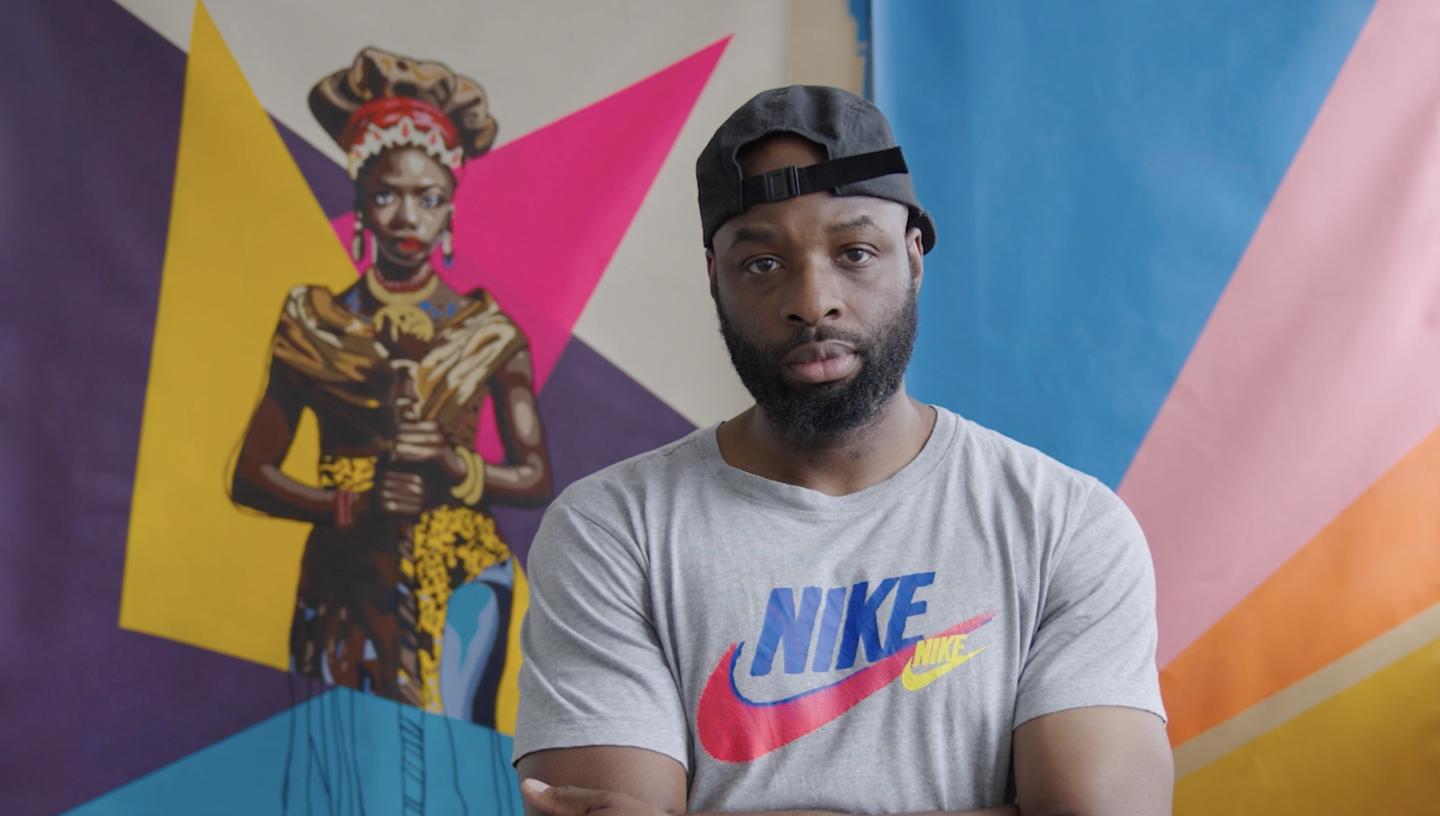
Joseph Ijoyemi is a Swedish-Nigerian artist, whose practice focuses on illuminating African history from a contemporary viewpoint.
Ijoyemi has been part of a project to reimagine the Atlantic Worlds gallery at the National Maritime Museum, a space that explores the unequal, sometimes brutal histories of the Atlantic Ocean.
The result is two vibrant new artworks, Sovereign Strength and Ancestral Thrones, both intended to bring light and humanity to pre-colonial Africa.
"When you go into the space, they’re almost like a beacon: a lighthouse within the darkness," he says. See them on display now at the National Maritime Museum, and read on to discover more about the the artworks.
Bringing missing stories to light
Ijoyemi’s works aim to reframe and celebrate Black histories, particularly those connected to pre-colonial Africa.
“My practice starts by looking at different stories, in order to highlight some of the things we never thought existed,” Ijoyemi says. “As I started doing the research for this commission, I really wanted to dig deeper into the history of pre-colonial Africa and understand what was missing.”
Ijoyemi was struck by the predominance of female rulers during this period, and wanted to honour this in the artwork, Sovereign Strength, a double-sided acrylic painting filled with vibrancy and vivacity.
On one side the painting depicts Queen Amina of Zaria, a kingdom in what is now northern Nigeria. Thought to have been born in around 1533, Amina played an instrumental role in expanding her kingdom’s territory.
Ijoyemi has depicted her holding a staff, a nod to her prowess as a warrior and leader. “I want people to lock in at her eyes,” he explains. “I want people to know that the work is looking at you, as well as you looking at the subject. I want to create that connection.”
On the reverse side the painting depicts Queen Nzinga of Matamba (a historic kingdom located in present-day Angola).
Known for her indomitable spirit, the 17th century ruler resisted Portuguese colonial expansion for nearly four decades. As with many of his works, Ijoyemi used archival records, books and insights from conversations with academics to feed into the finished piece.
For Ijoyemi, it was important that each side of the artwork featured different rulers. “When you come into the gallery, it’s almost like you’re seeing a new artwork and story every time,” he explains. “The work is ongoing, and so is the history.”
By bringing stories of pioneering queens into the Atlantic Worlds gallery, Ijoyemi hopes to capture the imagination of visitors.
“I have two young daughters, and a lot of my work is about empowering the next generation,” he says. “I want women, especially young Black women, to look at this artwork and feel inspired, empowered, and to realise that there were dominant women before the transatlantic history.”
Picturing pre-colonial Africa
Ancestral Thrones, Ijoyemi’s other painting on display, also aims to challenge perceptions of pre-colonial Africa.
The acrylic painting featuring gold leaf details is a celebration of the continent’s rich cultural heritage, and highlights its vibrant and diverse kingdoms. “The artwork challenges Eurocentric views, offering a fuller picture of Africa’s grand and complex history,” Ijoyemi says.
At the centre is an outline of Africa, inspired by a map in Royal Museums Greenwich’s collection. “It highlights how many rulers there were before the colonial era,” Ijoyemi says.
Details of three Dahomey Amazons – an all-female regiment of warriors from what is now Benin – as well as the Golden Stool – a reference to the Asante Kingdom in West Africa – highlight the continent’s martial strength.
The work also pays tribute to Africa’s music and festivals, shown through images of a dancer and drummers. A Yoruba shrine head meanwhile acknowledges the region’s artistic traditions.
Atlantic Worlds Reimagined
Ijoyemi has partnered with Royal Museums Greenwich on a number of occasions as part of his role as co-founder of arts organisation The Collective Makers. This latest commission gave him an opportunity to rethink and recontextualise that experience of exploring the National Maritime Museum’s collections.
“As a Black artist, I’ve come to realise that when I’m looking into these archival materials, I can take ownership and create new narratives,” he says.
Ijoyemi’s works are among a number of contemporary art installations within the Atlantic Worlds gallery in the Museum. Together they are intended to offer fresh perspectives on transatlantic slavery, as well as confront how Black histories have been approached within the space in the past.
“I feel ecstatic to have my work displayed at the National Maritime Museum,” he says. “I feel it’s important that more Black artists should be part of this narrative of responding to Black history. Hopefully this will pave the way for other emerging young artists to be part of the Museum.”
